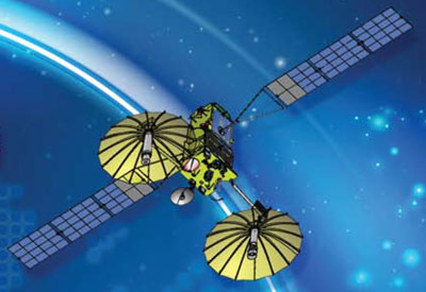Luch-5B

Luch Satellites are part of the Russian Satellite Data Relay Network for the International Space Station. The constellation is somewhat similar to the US Tracking and Data Relay Satellite System and consists of a series of satellites in Geostationary Orbit covering the trajectory of the space station and other low-orbiting spacecraft. The Russian Orbital Segment of the International Space Station can use its Altair and Regul communications system to use the Luch Satellite System for data, video and voice downlink as well as uplink from the Russian Mission Control Center. Low-orbiting spacecraft that could take advantage of the Luch system, once established, include classified military satellites, weather satellites, remote sensing spacecraft was well as Launch Vehicles and Upper Stages. The Luch-5 constellation will consist of three Satellites, Luch 5A, 5B and 5V. Launch 5A launched aboard a Proton in 2011, Luch 5B follows in November and Luch 5V is set for launch in late 2013 or early 2014. For ISS to take full advantage of the system, external outfitting tasks on the Russian Segment have to be completed which will likely occur in 2013.
Luch 5B is based on the Ekspress-1000A satellite bus being manufactured by ISS Reshetnev, formerly NPO PM. The vehicle carries a two-way communications payload that supports S- and Ku-band data relay. The high-precision antennas of the vehicle are capable of orienting themselves to lock onto the vehicle and continue to track it along its respective trajectory. Each of the two user antennas can track its own low-flying vehicle – one antenna supports S-Band, the other Ku-Band. Ku-Band channel capacity is 150Mbit/s while the S-Band throughput is about 5Mbit/s. Luch 5B carries a Laser Communications System. In addition, the Luch Satellites are outfitted with L-Band navigation payloads to improve the accuracy of the Russian GLONASS Navigation System. Luch 5B is planned to operate for at least 10 years in Geostationary Orbit at a location of 16 degrees west. Luch has two deployable solar arrays that generate about 2,000W of end-of-mission-power.
